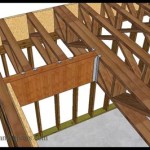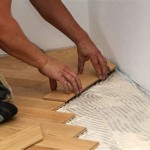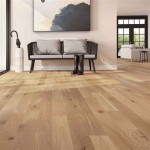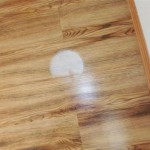Engineered Hardwood Flooring Wear Layer Thickness: A Comprehensive Guide
Engineered hardwood flooring has become a popular choice for both residential and commercial spaces due to its aesthetic appeal, relative affordability, and improved stability compared to solid hardwood. A crucial factor determining the durability and longevity of engineered hardwood is the thickness of its wear layer. This article provides a detailed exploration of wear layer thickness, its impact on performance, and factors to consider when selecting engineered hardwood flooring.
Engineered hardwood flooring consists of multiple layers. The core layers, typically made of plywood or high-density fiberboard (HDF), provide dimensional stability, resisting warping and expansion caused by changes in humidity. The top layer, the wear layer, is a solid hardwood veneer that provides the visual characteristics and surface properties of solid hardwood flooring. The wear layer is what is seen and walked upon, making its thickness paramount to the floor’s lifespan and resistance to daily wear and tear.
Understanding Wear Layer Thickness
Wear layer thickness is measured in millimeters (mm) or mils (thousandths of an inch). Generally, wear layers range from 0.5 mm to 6 mm or more. The thicker the wear layer, the more durable and long-lasting the flooring is likely to be. However, thickness is not the only factor to consider; the type of wood species used for the wear layer and the quality of the finish coating also play significant roles in the floor's overall performance.
A thinner wear layer, such as 0.5 mm to 2 mm, is typically found in lower-cost engineered hardwood options. Floors with these thinner layers are suitable for low-traffic areas such as bedrooms or guest rooms. They are less resistant to scratches, dents, and wear from foot traffic, and they offer limited refinishing potential.
Medium wear layers, ranging from 2 mm to 4 mm, offer a good balance between durability and cost. These floors are appropriate for moderate traffic areas like living rooms and dining rooms. They provide better resistance to everyday wear and tear and may allow for one or two refinishing cycles, depending on the actual thickness and the sanding process.
Thick wear layers, 4 mm and above, provide the highest level of durability and are ideal for high-traffic areas such as hallways, kitchens, and commercial spaces. These floors can withstand significant wear and tear and offer the greatest potential for refinishing, extending the floor's lifespan considerably. Flooring with a wear layer of 6 mm or more can often be refinished multiple times, bringing it back to its original appearance even after years of use.
It's important to note that "refinishing" engineered hardwood doesn't involve the same level of sanding as solid hardwood. Due to the relatively thin wear layer, caution must be exercised during sanding to avoid removing too much material and exposing the core layers. Professional refinishing is highly recommended to ensure the process is done correctly and to preserve the floor's integrity.
The Impact of Wear Layer Thickness on Performance
The wear layer thickness directly influences several key performance characteristics of engineered hardwood flooring, including durability, refinishing potential, resistance to damage, and overall lifespan.
Durability: A thicker wear layer provides greater resistance to scratches, dents, and abrasion. Everyday activities such as walking, pets, and moving furniture can cause wear and tear on the floor's surface. A thicker wear layer acts as a buffer, protecting the underlying core and maintaining the floor's appearance for a longer period.
Refinishing Potential: One of the primary benefits of a thicker wear layer is the ability to refinish the floor. Refinishing involves sanding down the existing finish and applying a new coat, effectively removing scratches, dents, and other surface imperfections. A thicker wear layer provides more material to work with during sanding, allowing for multiple refinishing cycles. Conversely, a thinner wear layer may allow for only minimal sanding or no refinishing at all.
Resistance to Damage: The thickness of the wear layer also impacts the floor's resistance to moisture and impact damage. While engineered hardwood is generally more resistant to moisture than solid hardwood, excessive moisture can still cause warping or damage. A thicker wear layer provides additional protection against moisture penetration, helping to maintain the floor's structural integrity. Similarly, a thicker layer can better withstand impacts from dropped objects or heavy furniture.
Overall Lifespan: Ultimately, the wear layer thickness plays a significant role in determining the floor's overall lifespan. A thicker wear layer translates to a longer lifespan due to its increased durability, refinishing potential, and resistance to damage. Investing in engineered hardwood with a thicker wear layer can be a cost-effective choice in the long run, as it reduces the need for frequent replacements.
It is essential to consider the expected traffic and usage of the space when determining the appropriate wear layer thickness. High-traffic areas such as entryways, kitchens, and living rooms require a thicker wear layer to withstand the constant wear and tear. Lower-traffic areas such as bedrooms or home offices may be suitable for thinner wear layers.
Factors to Consider When Selecting Engineered Hardwood
While wear layer thickness is a crucial factor, it is essential to consider other aspects when selecting engineered hardwood flooring. These include the wood species, finish quality, core construction, and overall aesthetic appeal.
Wood Species: The type of wood used for the wear layer influences the floor's hardness, grain pattern, and color. Different wood species have varying levels of hardness, measured by the Janka hardness scale. Harder wood species, such as oak, maple, and hickory, are more resistant to dents and scratches. Softer wood species, such as pine or cherry, are more susceptible to damage and may require a thicker wear layer in high-traffic areas.
Finish Quality: The finish coating protects the wear layer from scratches, stains, and UV damage. High-quality finishes, such as aluminum oxide and polyurethane, offer excellent durability and resistance to wear. The number of finish coats and the application process also impact the finish's performance. A durable finish can significantly extend the life of the wear layer, reducing the need for frequent maintenance or refinishing.
Core Construction: The core of engineered hardwood flooring provides dimensional stability and resistance to moisture. Plywood cores are generally more stable and moisture-resistant than HDF cores. The number of plywood layers and the quality of the adhesive used also impact the core's performance. A well-constructed core is essential for preventing warping, cupping, and other moisture-related issues.
Aesthetic Appeal: The appearance of the engineered hardwood flooring is also an important consideration. Factors such as the wood species, grain pattern, color, and plank width influence the floor's overall aesthetic. Consider the existing décor and style of the space when selecting engineered hardwood to ensure a cohesive and visually appealing design. Wider planks tend to make a room feel larger, while narrower planks can create a more formal look.
Beyond these factors, consider the installation method. Engineered hardwood can be installed using various methods, including glue-down, nail-down, and floating installations. The choice of installation method depends on the subfloor type, the floor's construction, and personal preferences. Floating installations are generally easier and faster, while glue-down installations provide greater stability and sound reduction.
Another important consideration is the warranty offered by the manufacturer. A comprehensive warranty provides assurance of the product's quality and protects against defects in materials and workmanship. Pay close attention to the warranty terms and conditions, including the coverage period, limitations, and exclusions.
Ultimately, selecting the right engineered hardwood flooring involves carefully considering wear layer thickness in conjunction with other factors such as wood species, finish quality, core construction, and aesthetic appeal. By taking a holistic approach, it is possible to choose a floor that meets specific needs and provides long-lasting beauty and performance.
Consulting with a flooring professional can provide valuable guidance in selecting the appropriate engineered hardwood flooring for the specific application. Experienced professionals can assess the space's traffic levels, environmental conditions, and aesthetic preferences to recommend the optimal wear layer thickness and other product features.
Finally, proper maintenance is crucial to maximizing the lifespan of engineered hardwood flooring, regardless of wear layer thickness. Regular cleaning, prompt spill cleanup, and the use of protective mats and furniture pads can help prevent scratches, dents, and other damage, preserving the floor's appearance and extending its lifespan.

Wear Layers On Engineered Flooring

What Is An Engineered Wood Floor Wear Layer And Beyond Blog

Myth Busting Engineered Hardwood Wear Layers Impressions Flooring Collection

Our Thick 6mm Wear Layer Engineered Wood Flooring Is Better

3 4 Inch Thick Engineered Baltic Birch Ply 5 8 Mm Wear Layer

6 Questions About Engineered Hardwood Floors Peachey Flooring

Find Answers To Commonly Asked Questions Hardwood Flooring Dramis Floors

Wide Plank And Exotic Floors All About Wear Layers On Engineered Flooring Lp
What Is A Wear Layer On Engineered Wood Floors Timba Boards

Wear Layers On Engineered Flooring
Related Posts








